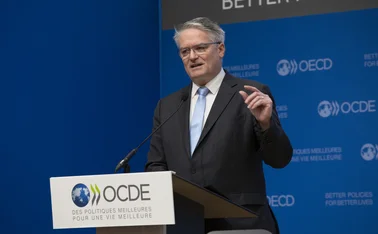
BIS’s Borio calls on economists to take money more seriously
Money is too often explored in isolation, or ignored completely, the BIS economist says

Economists ought to take money more seriously in their thinking, the Bank for International Settlements’s Claudio Borio argues in a new paper, setting out a framework for thinking more clearly about the monetary system.
“Bar a few who have sailed into these waters, money has been allowed to sink by the macroeconomics profession. And with little or no regrets,” the head of the BIS monetary and economic department says. “Today, I would like to raise it from the seabed.”
In the paper, published
Only users who have a paid subscription or are part of a corporate subscription are able to print or copy content.
To access these options, along with all other subscription benefits, please contact info@centralbanking.com or view our subscription options here: http://subscriptions.centralbanking.com/subscribe
You are currently unable to print this content. Please contact info@centralbanking.com to find out more.
You are currently unable to copy this content. Please contact info@centralbanking.com to find out more.
Copyright Infopro Digital Limited. All rights reserved.
As outlined in our terms and conditions, https://www.infopro-digital.com/terms-and-conditions/subscriptions/ (point 2.4), printing is limited to a single copy.
If you would like to purchase additional rights please email info@centralbanking.com
Copyright Infopro Digital Limited. All rights reserved.
You may share this content using our article tools. As outlined in our terms and conditions, https://www.infopro-digital.com/terms-and-conditions/subscriptions/ (clause 2.4), an Authorised User may only make one copy of the materials for their own personal use. You must also comply with the restrictions in clause 2.5.
If you would like to purchase additional rights please email info@centralbanking.com







